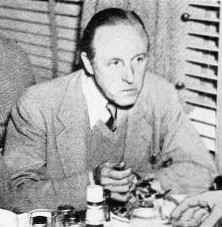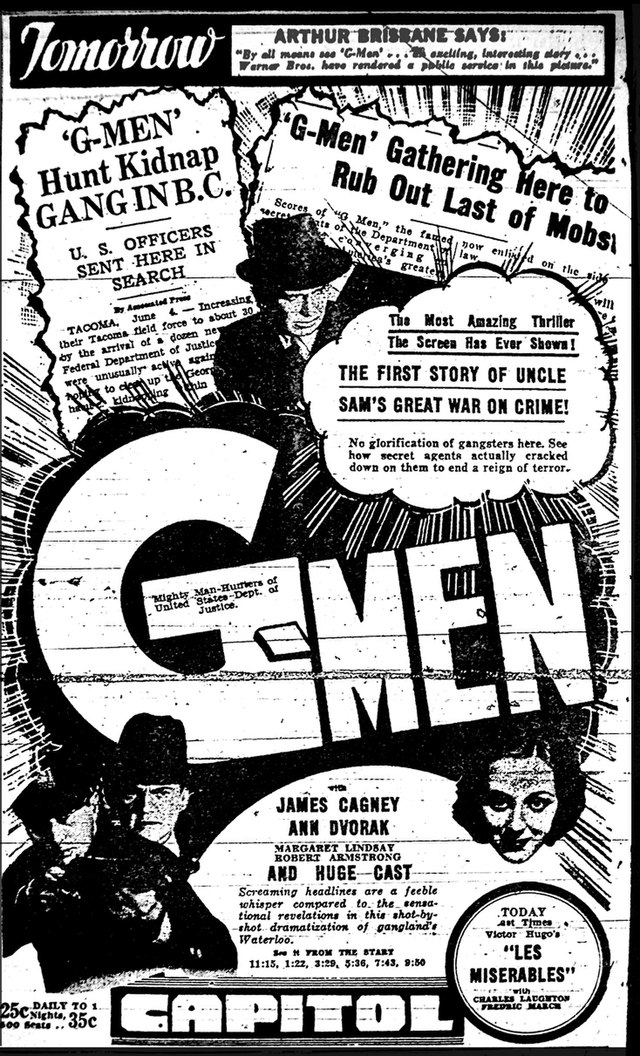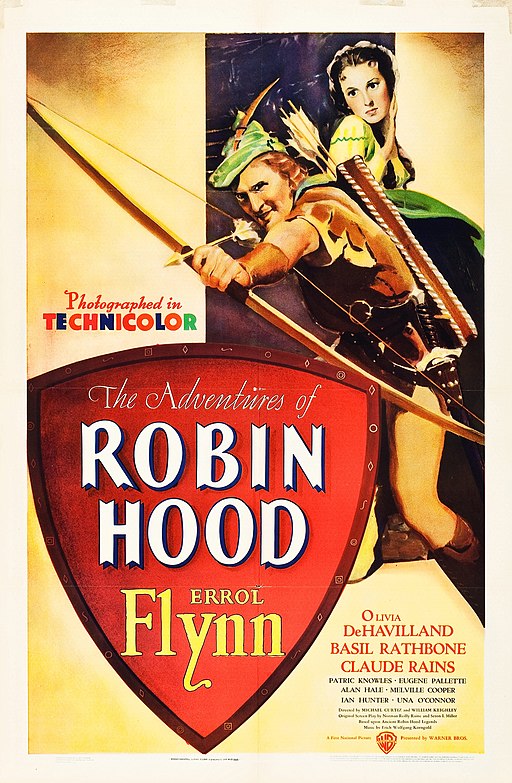William Keighley
back| Full Name | William Keighley |
| Born | August 4, 1889 |
| Birthplace | Philadelphia, Pennsylvania, USA |
| Died | June 24, 1984 |
| Buried | Forest Lawn Memorial Park, Glendale, California, USA |
| Married to | Genevieve Tobin (from 1938 until his death in 1984) |
| Children | None |
| Notable films | The Man Who Came to Dinner (1942) - G Men (1935) - Bullets or Ballots (1936) - The Adventures of Robin Hood (1938) |
William Keighley
"The Versatile Craftsman of Hollywood's Golden Age"
Before becoming a director, Keighley had a varied career, including serving in World War I and acting on Broadway.
Keighley's career in Hollywood spanned from the late 1920s through the 1940s. He was known for his versatility, directing comedies, dramas, and action films. His collaboration with James Cagney in several films is particularly noted.
He retired from filmmaking in the late 1940s and lived a relatively private life until his death in 1984.
Related
William Keighley
Biography and Overview of his Career
Before his film career, Keighley served in World War I. After the war, he ventured into acting, particularly on Broadway, showcasing his versatility and talent in performing arts.
Transition to Film
- Entry into Hollywood: Keighley transitioned from theater to film in the late 1920s, beginning his Hollywood career during the era of silent films.
- Early Film Work: He started working in various capacities including assistant director, which provided him with a comprehensive understanding of the filmmaking process.
Directing Career
- Rise to Prominence: Keighley's directing career took off in the 1930s. He became known for his ability to handle different genres, from comedies and dramas to action films.
Personal Life
- Marriage: He married actress Genevieve Tobin in 1938. The couple's relationship was a significant part of his personal life, but they did not have children.
- Interests and Lifestyle: Keighley was known to have a passion for the arts, evident in his transition from stage to screen.
Later Career and Retirement
- Career Wind Down: By the late 1940s, Keighley's directing career began to slow down.
- Retirement: He retired from active filmmaking and led a relatively private life afterward.
Death and Legacy
- Died: June 24, 1984
- Legacy: Keighley's legacy in the film industry is marked by his versatility and the enduring popularity of several of his films, particularly "The Adventures of Robin Hood."
Contribution to Film
- Versatility: Keighley's ability to direct a wide range of genres made him a respected figure in Hollywood.
- Influence: His work, especially in the action and adventure genres, influenced the styles and techniques of future films in these categories.
Keighley's life and career were characterized by a seamless transition from stage to screen, an ability to adeptly handle various film genres, and a personal life marked by a long, stable marriage. His contributions to the Golden Age of Hollywood cinema are still remembered and celebrated.
Video Overview of Movies by William Keighley:
Movies Directed by William Keighley:
1930s
- 1933: "The Match King"
A drama about an ambitious man who builds a financial empire selling matches but faces moral and financial collapse. - 1934: "Easy to Love"
A romantic comedy where a womanizing songwriter tries to win the heart of a woman he truly loves for the first time. - 1934: "Big Hearted Herbert"
A comedy about a gruff and penny-pinching businessman who learns the value of kindness and family. - 1935: "Mary Jane's Pa"
A drama about a man who returns to his family after abandoning them years earlier, hoping to reconnect with his daughter. - 1935: "G Men"
A crime film starring James Cagney as a lawyer who becomes a federal agent to avenge his friend's death in the gangster world. - 1935: "The Right to Live"
A drama where a man, paralyzed and believing his wife loves another man, contemplates suicide but learns about true love. - 1936: "Bullets or Ballots"
An undercover cop infiltrates a crime syndicate, facing moral dilemmas in his fight against organized crime. - 1936: "Stars Over Broadway"
A musical drama about the rise and fall of a young singer's career in show business. - 1937: "Varsity Show"
A musical comedy about college students who put on a show to prove the modernity of their music to a conservative former student. - 1937: "The Prince and the Pauper"
An adventure film based on Mark Twain's novel, where a prince and a pauper swap places in Tudor England. - 1937: "The Singing Marine"
A musical about a Marine winning a singing contest and becoming a celebrity, but he struggles with his newfound fame. - 1938: "The Adventures of Robin Hood" (co-directed with Michael Curtiz)
A classic adventure film depicting the legendary Robin Hood's battle against injustice in medieval England. - 1938: "Valley of the Giants"
An action-adventure film about a struggle between good and evil in the California redwood forests. - 1939: "Secrets of an Actress"
A drama about the romantic entanglements and professional struggles of a famous actress. - 1939: "Yes, My Darling Daughter"
A comedy about a young woman who wants to spend a weekend with her boyfriend, causing a scandal in her conservative family. - 1939: "The Roaring Twenties" (uncredited)
A crime drama depicting the rise and fall of three gangsters during the Prohibition era. - 1939: "Each Dawn I Die"
A crime drama about a reporter framed for manslaughter and his life in prison as he seeks to clear his name.
1940s
- 1940: "No Time for Comedy"
A romantic comedy about a playwright torn between his wife and an alluring actress. - 1940: "The Fighting 69th"
A war film about the famous New York Irish Regiment and its experiences in World War I. - 1941: "Four Mothers"
A drama following the lives of the four married daughters of the Lemp family. - 1941: "The Bride Came C.O.D."
A romantic comedy about a pilot kidnapping an heiress who is trying to elope with a bandleader. - 1942: "The Man Who Came to Dinner"
A comedy about a critic who slips on ice, ends up bedridden in a small-town family's home, and takes over their lives. - 1943: "George Washington Slept Here"
A comedy about a New York couple buying a dilapidated country house, which brings them more trouble than peace. - 1943: "The Constant Nymph"
A romantic drama about a composer who falls in love with a young woman but marries her older cousin instead. - 1948: "The Street with No Name"
A film noir about an FBI agent infiltrating a gang to break up their criminal activities. - 1949: "The Lady Takes a Sailor"
A romantic comedy about a businesswoman who discovers a secret underwater project and tries to expose it, falling for the project's leader.
1950s
- 1951: "Close to My Heart"
A drama about a couple who adopts a baby and seeks to find the child's biological parents. - 1953: "The Master of Ballantrae"
An adventure film based on Robert Louis Stevenson's novel, about two Scottish brothers and their adventures and battles.
Analysis of William Keighley’s Direction Style:
William Keighley's directorial style, particularly prominent during the Golden Age of Hollywood, is noteworthy for several reasons:
Genre Versatility
- Range of Genres: Keighley adeptly handled a wide array of genres, including comedy, drama, musical, action, and adventure. This versatility is a hallmark of his directorial career.
- Adaptability: His ability to shift seamlessly between genres demonstrates a profound understanding of storytelling and audience engagement, regardless of the film's thematic or tonal requirements.
Narrative and Pacing
- Engaging Storytelling: Keighley had a knack for creating engaging narratives. His films often maintained a brisk pace, keeping audiences invested.
- Character Development: He gave attention to character development, ensuring that characters were relatable and their motivations well understood, which was crucial in dramas and character-driven stories.
Visual Style
- Visual Flair: His films, like "The Adventures of Robin Hood," showcased a vivid visual style, with dynamic use of color (especially in Technicolor films) and grand set designs.
- Camera Work: Keighley employed camera movements that enhanced the storytelling, using angles and framing to emphasize emotions or actions, a technique especially evident in his action and adventure films.
Collaboration with Actors
- Actor's Director: Keighley was known for his effective collaboration with actors, drawing out performances that were both nuanced and impactful. This was especially evident in his repeated collaborations with actors like James Cagney.
- Star Performances: He had a talent for harnessing and showcasing the charisma of Hollywood stars, which added a layer of appeal to his films.
Thematic Elements
- Moral and Social Themes: Many of his films, while primarily entertainment, also touched on social and moral themes, reflecting the societal attitudes and issues of the time.
- Heroism and Justice: Films like "G Men" and "The Adventures of Robin Hood" highlight themes of heroism, justice, and the fight against corruption or tyranny.
Contribution to the Film Industry
- Influence on Genres: Keighley's work in genres like the swashbuckling adventure and crime dramas influenced the styles and techniques of future films in these categories.
- Legacy: His films are not just a representation of Hollywood's Golden Age but also contributed to the evolution of genre filmmaking in Hollywood.
In summary, William Keighley's directorial style is characterized by his ability to handle a variety of genres with adept storytelling, a strong sense of visual and narrative pacing, effective collaboration with actors, and the incorporation of engaging thematic elements. His contribution to the film industry, especially during its formative years, is marked by a blend of entertainment and craftsmanship, leaving a lasting impact on the genres he worked in.
Awards and Recognitions:
Despite the lack of individual awards, it's important to note the success and impact of several films he directed:
- "The Adventures of Robin Hood" (1938): Co-directed with Michael Curtiz, this film is one of Keighley's most notable works. It was nominated for four Academy Awards and won three, including Best Art Direction, Best Film Editing, and Best Original Score. While these awards were not directly attributed to Keighley, the film's success is a testament to his skill as a director.
- Critical Recognition: Many of Keighley's films, such as "G Men" and "Each Dawn I Die," were well-received and praised for their direction, storytelling, and technical proficiency. These films are often cited for their influence on the genres of crime drama and action.
- Legacy: Keighley's legacy in the film industry is more about the enduring popularity and historical significance of his films rather than individual awards. His contributions, particularly to the action and adventure genres, have been influential in the evolution of these genres.
In the context of Hollywood's Golden Age, Keighley's work is recognized more for its artistic and cultural impact rather than for formal accolades.




